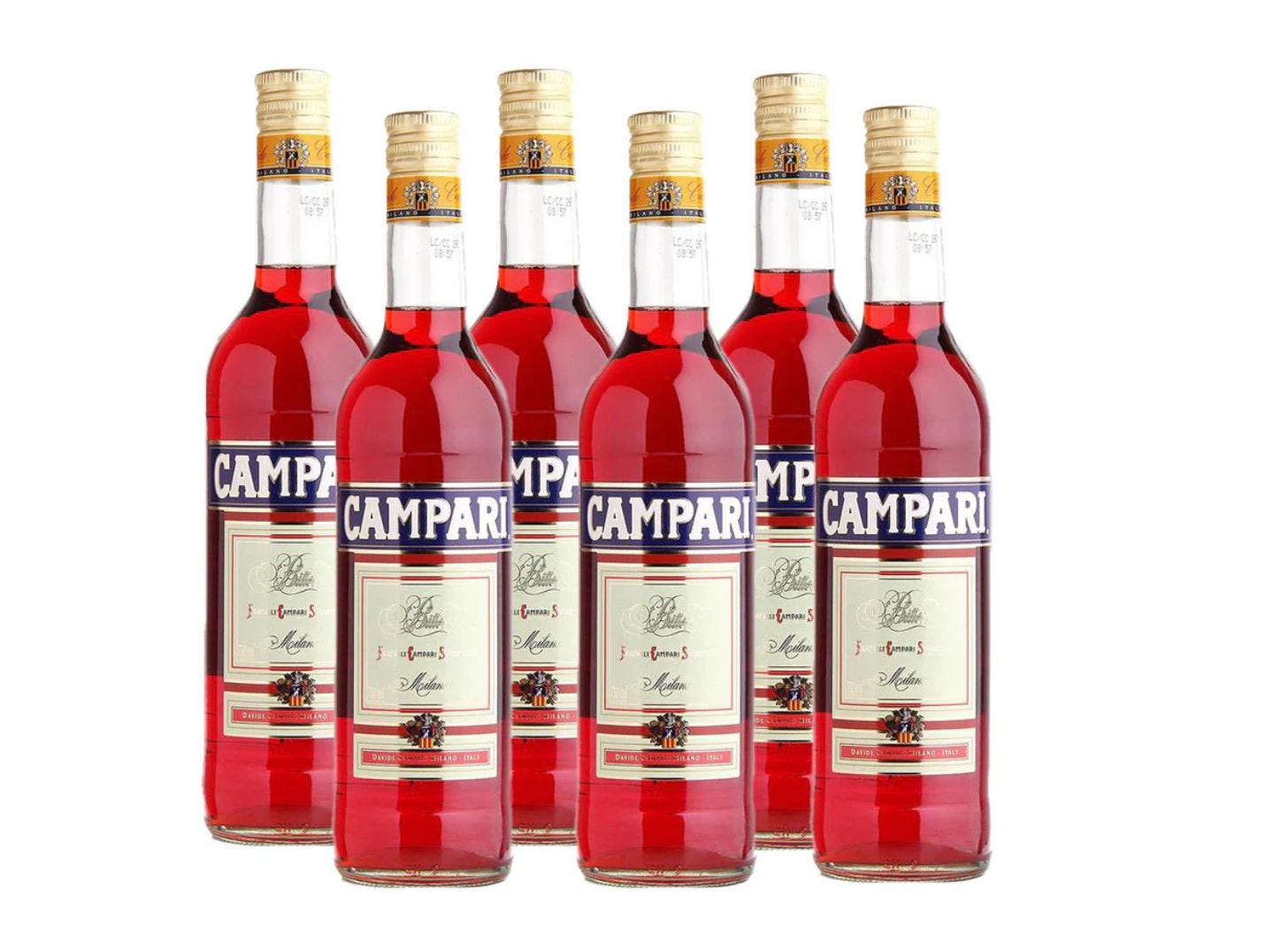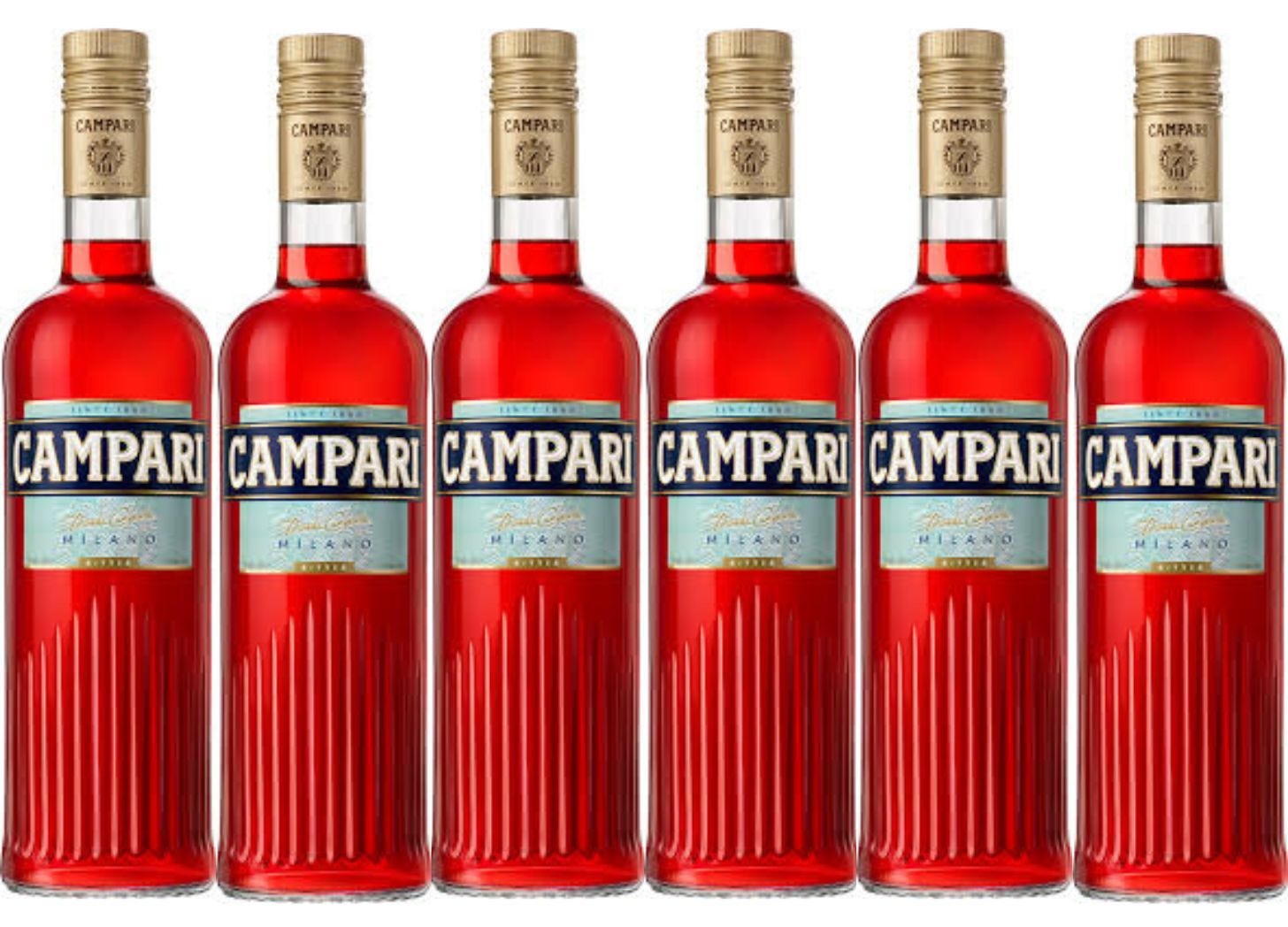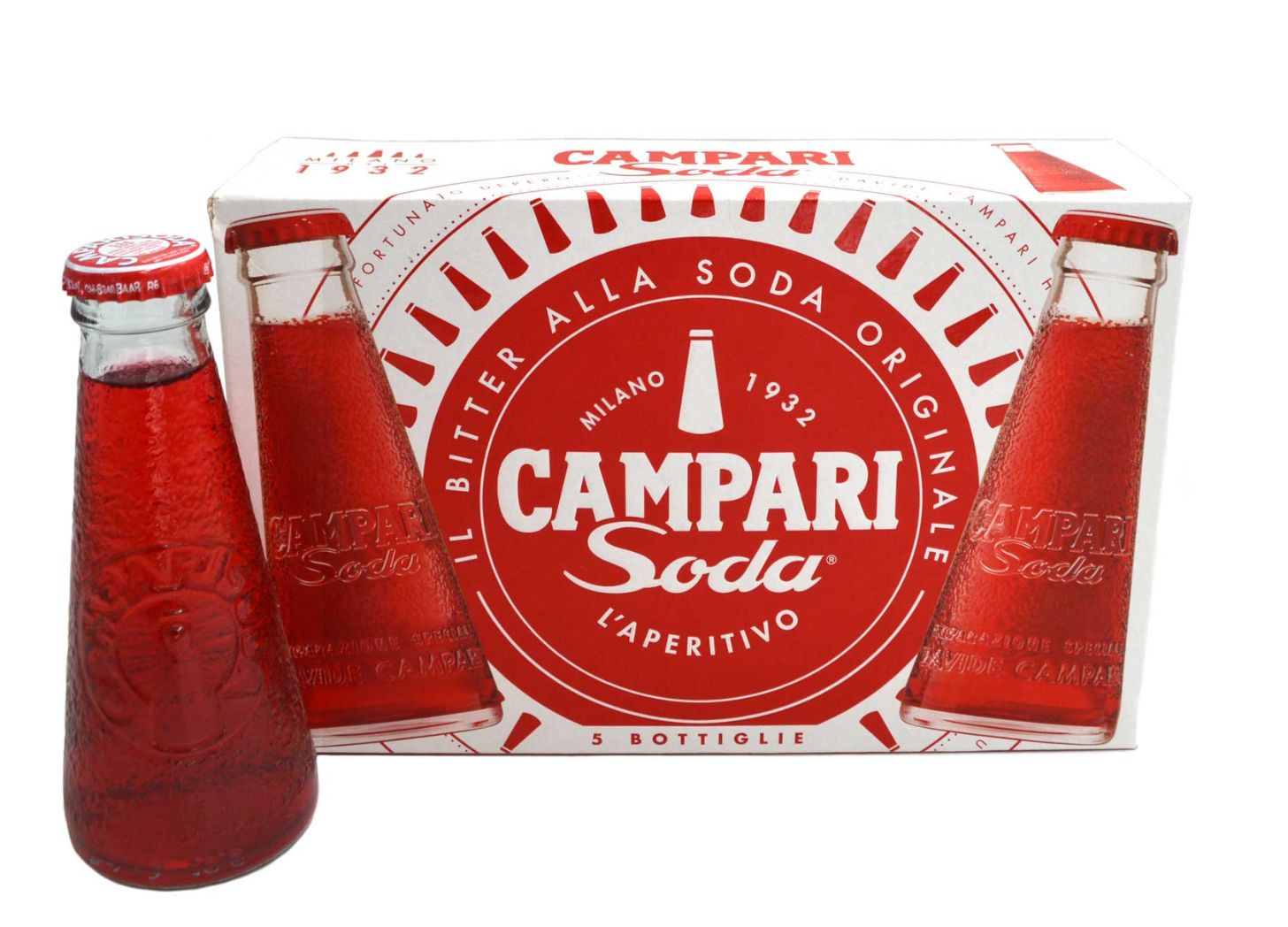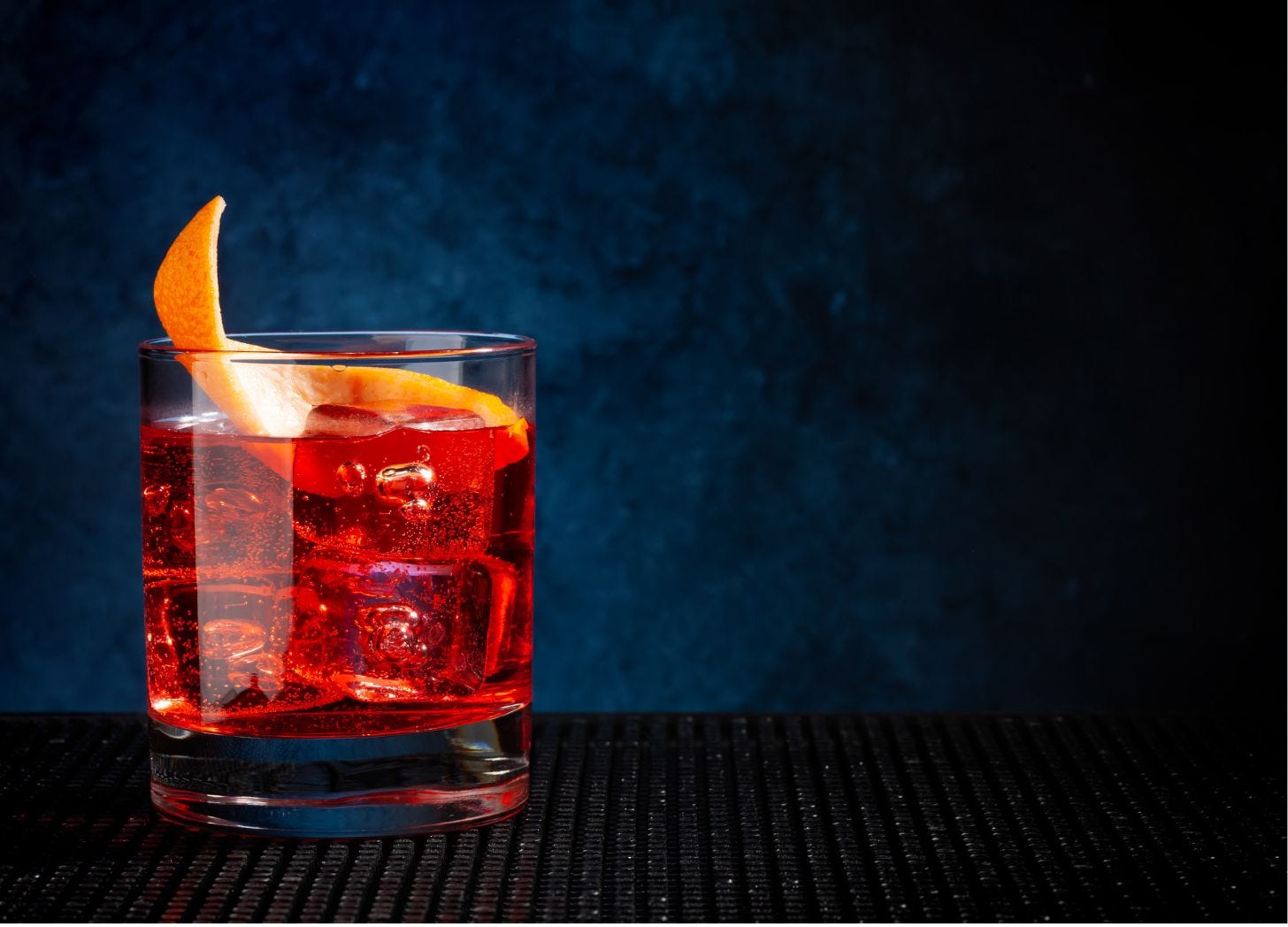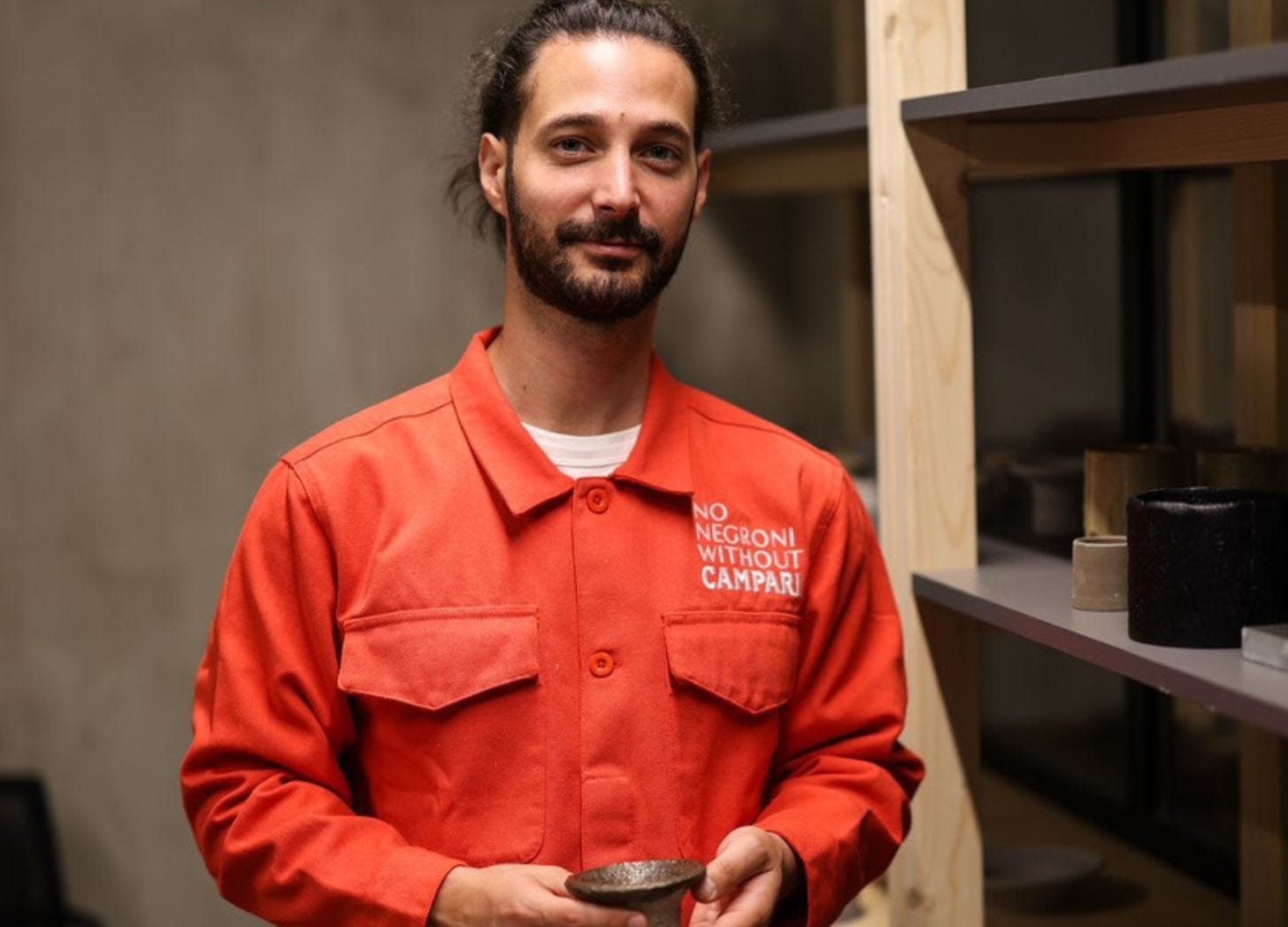Campari Versus Campari
A Campari primer + cocktail recipes featuring the iconic aperitivo
Campari lovers, this is for you! Campari curious? Read on.
I’ve been crazy for Campari since the last century.
Picture it. Chicago. 1998.
An Italian bistro where no one checked our IDs. I was in college at the time. We were still mixing vodka and cranberry in the dorm room closet. “The Cape Cod” was the height of the sophistication, followed by vodka and Cleary Canadian.
At the bistro, I noticed a Campari and soda at the next table over, served in a rocks class with a wedge of orange and a baby bottle Schweppes soda on the side.
It was the chicest cocktail I had ever seen. It was a taste I vowed to acquire.
It turns out the cherry red spirit was deceptively bitter. It would take some time to make Campari mine.
Read: How I learned to Love Campari
An epic of obsession, flirtation, digestion, and bitter-sweet nostalgia
So, What Is Campari?
Campari is a bitters-style aperitivo.
As the name would imply, the spirit is bitter, owing to a recipe that originated as digestive tonic.
While the original recipe remains secret, it is thought to contain a sweetened infusion of herbs, aromatic plants, bitter orange peel, rhubarb, ginseng, gentian root, and tree barks like quinine and casciarilla.
Its signature red color was originally derived from tiny red insects, in a natural dye called cochineal. The dye has been used for millennia. European explorers and colonists discovered it in Central America and introduced to their own textile markets. The bold, stable, and lasting red was at one point nearly as valuable as silver.
Cochineal has since been replaced with artificial coloring—at least within the world of spirits production, through some artisan distillers claim to still use it for vermouth and bitters.
Aperitivo
Aperitivo has multiple meanings. Etymologically it comes from the Latin word aperire: to open-up or uncover.
You’ve likely heard of the so-called Italian happy hour—a drink served with savory snacks designed to stimulate the appetite.
For a deeper dive, check out this piece and (vintage video!) on the subject.
Aperitivo is also a category of spirits, including Campari, vermouth, and Aperol.
Aperitivo loosely includes dry and mineral-driven white and sparkling wines, as their mouthwatering quality also stimulates digestion.
Campari Soda Versus Campari Soda
Over here, the “Campari Soda” is an iconic aperitivo. It comes premixed in adorable beaker-like bottles and served over ice with an orange slice (if they’re being fancy).
It’s only about 10% alcohol and contains 10 grams of sugar per 100 ml serving. This is a great introduction to Campari, and not super bitter.
If you love Campari, and want a stronger version, served straight over rocks and topped up with a splash of soda, order a “Bitter Campari and soda.” Bitter Campari e Soda in Italian.
Campari Cocktails
With its bitter flavor and earthy, herbal base, Campari adds dynamism and complexity to multitudes of recipes. These are the classics + one bonus recipe from a true Campari connoisseur.
For more, check out the Campari Academy
Campari Spritz
For those who love a Spritz, but find Aperol a bit too sweet, the Campari Spritz is a perfect compromise. Swap out Aperol for Campari in your favorite recipe.
While most places have switched to Prosecco, I prefer the original recipe, which uses dry white wine. It’s an homage to the origins of the spritz as well.
The roots of the recipe date back to the days of 19th-century Habsburg rule in Veneto. Austrian soldiers used to add a “spritz” (German for splash) of soda water to the strong local wines to make them lighter.
Recipe
2 oz (60 ml) Campari
3 oz (90 ml) dry white wine (ex. Soave, Pinot Bianco, Pinot Grigio)
A splash of soda water
Stir over ice and garnish with an orange slice.
Campari Shakerato
Shakerato is an outright English-ism, and it means exactly what you think it does. Shakerare: to shake. Shakerato means shaken. The ultimate Campari-lover cocktail, the secret is in the shaking. It’s an ice-cold, bright and bitter, pure expression of the spirit.
Recipe
3 oz (90 ml) Campari
Ice
*Optional: a splash of simple syrup or sweet vermouth to cut the bitterness.
Fill up a cocktail shaker with as much ice as you can squeeze in. Add the Campari and shake aggressively for at least 20 seconds. The goal is to produce a smooth and frothy drink. Serve in a martini or coupe glass.
Americano
The Americano began as the “Milano–Torino,” a drink that combined Campari, which originated in Milan, and sweet vermouth that was first popularized in Torino.
Campari Caffé, located inside Milan’s Hotel du Nord, notoriously served the M-T, and began referring to it as the Americano, when American guests requested a top-off of sparkling water.
Recipe
1 part Campari
1 part sweet vermouth (ex. Carpano Antica)
Soda water to top
Lemon or orange twist to garnish
Combine over ice in a tumbler. Top with soda water. Garnish with a lemon twist or an orange slice.
Negroni
The Americano is to Milan, what the Negroni is to Florence.
In 1919, Conte Camillo Negroni, who apparently appreciated quite a stiff drink, suggested his bartender, Fosco Scarselli at Caffè Casoni (Via de’ Tornabuoni, 2), add gin in place of soda water in his Americano cocktail. The cocktail took bar culture by storm.
For diehard Negroni fans, you can still visit the original site of Caffè Casoni, which has been renamed Bar Giacosa. Their Negroni is dangerously delicate and light-seeming, and absolutely delicious.
Recipe
1 oz (30 ml) London dry gin
1 oz (30 ml) sweet vermouth (ex. Carpano or Martini Rosso
1 oz (30 ml) Campari – the original cochineal-colored formula
Fill a small tumbler (old-fashioned glass) with large ice cubes. Add gin, vermouth, and Campari.
Bonus Recipe: Fluffy Garibaldi
Courtesy of Campari ambassador, bar director at Juls Ibiza, and bar manager at Bungalow 7, Dimitris Karapanos, A fun, fresh, and foamy way to temper bitter Campari with an elegant prohibition-era egg white element.
Recipe
40 ml Campari Bitter
100 ml Fresh orange juice
10 ml Egg whites
4–6 fresh Mint leaves
Add all the ingredients into a shaker with ice and shake vigorously for 15–20 seconds until well chilled and frothy. Strain into a highball glass filled with ice and garnish with a fresh mint sprig.



